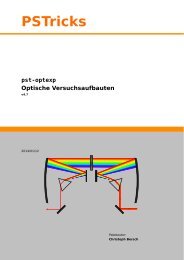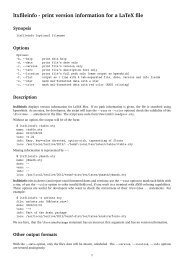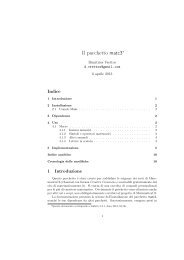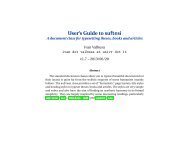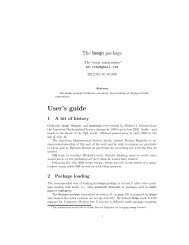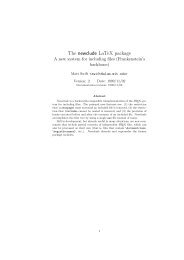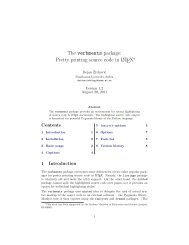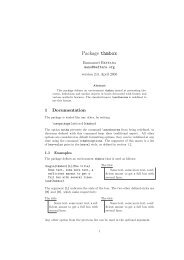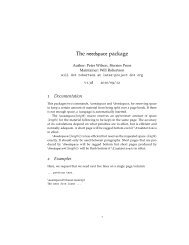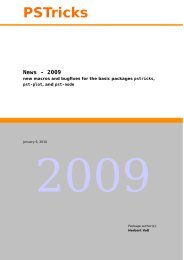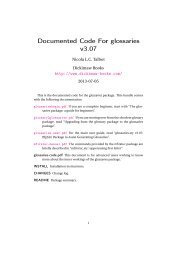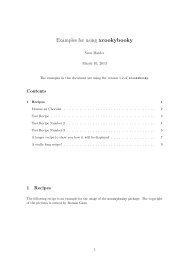The csquotes Package
The csquotes Package
The csquotes Package
Create successful ePaper yourself
Turn your PDF publications into a flip-book with our unique Google optimized e-Paper software.
optional arguments 〈cite〉 and 〈punct〉 specify the citation and any terminal punctuation<br />
of 〈text〉. 〈tpunct〉 denotes trailing punctuation after the command. If the<br />
autopunct option is enabled, the quotation commands will scan ahead for punctuation<br />
marks immediately following their last argument and can move them around<br />
if required. See § 8.7 on how to change the way these arguments are handled and<br />
§ 9.2 for reasons why you may want to specify the punctuation as a separate argument.<br />
<strong>The</strong> starred version of this command skips directly to the inner quotation<br />
level. Here are some usage examples:<br />
\textquote{...}<br />
\textquote[][.]{...}<br />
\textquote[Doe 1990, 67]{...}<br />
\textquote[{\cite[67]{doe90}}]{...}<br />
Note the use of the optional arguments in the examples above. As seen in the<br />
second example, 〈cite〉 is required whenever 〈punct〉 is used, even if it is empty.<br />
Also keep in mind that an optional argument containing square brackets must<br />
be wrapped in an additional pair of curly braces as shown in the last example.<br />
When working with automated citations, you might also want to learn about the<br />
integrated quotation facilities presented in § 5.<br />
3.4 Formal Quoting of Text in a Foreign Language<br />
<strong>The</strong>re are two additional commands which combine \textquote with the language<br />
switches of the babel or the polyglossia package:<br />
\foreigntextquote{〈lang〉}[〈cite〉][〈punct〉]{〈text〉}〈tpunct〉<br />
\foreigntextquote*{〈lang〉}[〈cite〉][〈punct〉]{〈text〉}〈tpunct〉<br />
This command combines \textquote with \foreignlanguage. Apart from the<br />
language, the arguments are handled as with \textquote.<br />
\hyphentextquote{〈lang〉}[〈cite〉][〈punct〉]{〈text〉}〈tpunct〉<br />
\hyphentextquote*{〈lang〉}[〈cite〉][〈punct〉]{〈text〉}〈tpunct〉<br />
This command combines \textquote with the hyphenrules environment. Apart<br />
from the language, the arguments are handled as with \textquote.<br />
3.5 Block Quoting of Regular Text<br />
Formal requirements in academic writing frequently demand that quotations be<br />
embedded in the text if they are short but set o as a distinct and typically indented<br />
paragraph, a so-called block quotation, if they are longer than a certain number<br />
of lines or words. In the latter case no quotation marks are inserted. <strong>The</strong> following<br />
command deals with this requirement automatically:<br />
\blockquote[〈cite〉][〈punct〉]{〈text〉}〈tpunct〉<br />
This command determines the length of the 〈text〉. If the length exceeds a certain<br />
threshold, the 〈text〉 will be typeset in display mode, i. e., as a block quotation. If<br />
not, \blockquote will behave like \textquote. Depending on the thresholdtype<br />
option, the threshold may be based on the number of lines required to typeset the<br />
6



